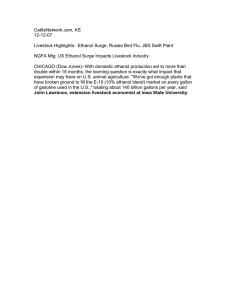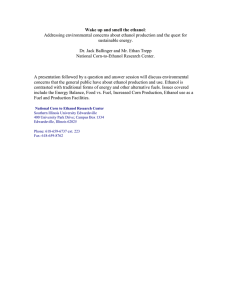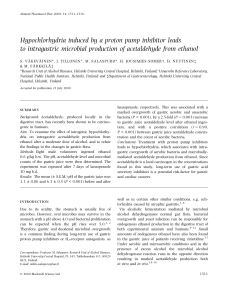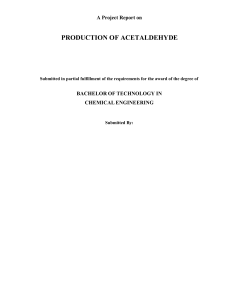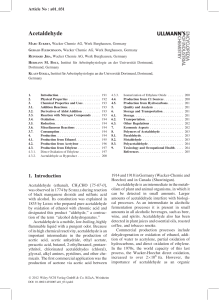PPT APEP
advertisement
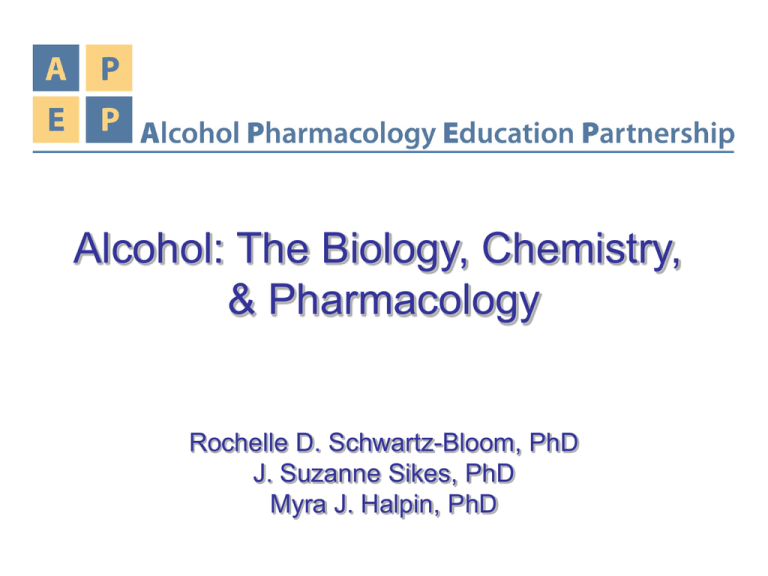
Alcohol: The Biology, Chemistry, & Pharmacology Rochelle D. Schwartz-Bloom, PhD J. Suzanne Sikes, PhD Myra J. Halpin, PhD Pharmacology principles Pharmacokinetics Absorption Distribution Metabolism Excretion Pharmacology principles Pharmacodynamics How alcohol works Adverse effects Toxicity Drug interactions Pharmacology is biology • cell types • cell membrane structure • filtration, passive diffusion, active tr. • R vs L circulatory system • genetics Pharmacology is chemistry • polarity • bond formation • concentration gradient • chemical reactions • enzymes as catalysts Alcohol Absorption Absorption: Stomach vs Intestine greater surface area Alcohol moves into the blood passively Water moves through pores Ethanol is small and polar Ethanol has some non-polar character Alcohol moves by filtration & passive diffusion Alcohol moves into the blood passively Water & small solutes move through holes in capillaries Ethanol is distributed everywhere Ethanol distributes into water spaces Males: low fat:water Females: high fat:water BAC: males < females The blood-brain-barrier: Not for alcohol! The blood-brain-barrier: Not for alcohol! Passive diffusion is key Symptoms of intoxication Symptoms of intoxication depend on brain region affected motor memory pleasure judgment risk impulsivity balance breathing, heart rate vomiting Neurons fire electrical impulses glutamate receptors GABA receptors Alcohol depresses neuron firing How does alcohol work? Glutamate increases firing Alcohol blocks glutamate receptors • affects judgment • reduces memory How does alcohol work? GABA decreases firing Alcohol opens GABA receptors • incoordination • reduces memory • slurred speech • disinhibits (obnoxious!) Alcohol increases Cl- entry into neurons through GABA receptor channels More negative charges inside the cell decreases firing Blackouts: Disruption in the hippocampus Hippocampus = memory! Alcohol can shrink the hippocampus Alcohol decreases neurogenesis Alcohol causes cell suicide (apoptosis) ….5 minute break Getting rid of alcohol The “first pass” effect: Metabolism in the stomach guys yes, girls no The “first pass” effect: Metabolism in the liver guys +++, girls ++ Ethanol metabolism: oxidation x 2 All about acetaldehyde H sweating rapid heart rate nausea dizziness headache H3C hangover symptoms cellular damage C O Ethanol Oxidation Alcohol Dehydrogenase (ADH) ethanol ---> acetaldehyde Acetaldehyde Dehydrogenase (ALDH) acetaldehyde ---> acetic acid Ethanol binds to an active site H O London forces H O H N Oxidation: ethanol loses 2 e- (a H atom) H O London forces H O H N Many types of ADH & ALDH ADH: 7 proteins ALDH: 2 major proteins Genetic Polymorphisms ADH1 ADH2 ADH3 ADH4 ADH5 ADH6 ADH7 ethanol ---> acetaldehyde *1 *2 *3 Polymorphic (in liver) Slow: increased risk of Alcoholism (Caucasians) Monomorphic (in stomach) Fast: decreased risk of alcoholism (Asians) Exhaling alcohol and the Breathalyzer Alcohol vaporizes in the airsacs Alcohol vaporizes easier than water Less H bonds to break Why teach about alcohol? Biology….. • cell types • cell membrane structure • filtration, passive diffusion, active tr. • DNA structure, protein synthesis • R vs L circulatory system • genetics & Chemistry • polarity • bond formation • concentration gradient • chemical reactions • enzymes as catalysts


